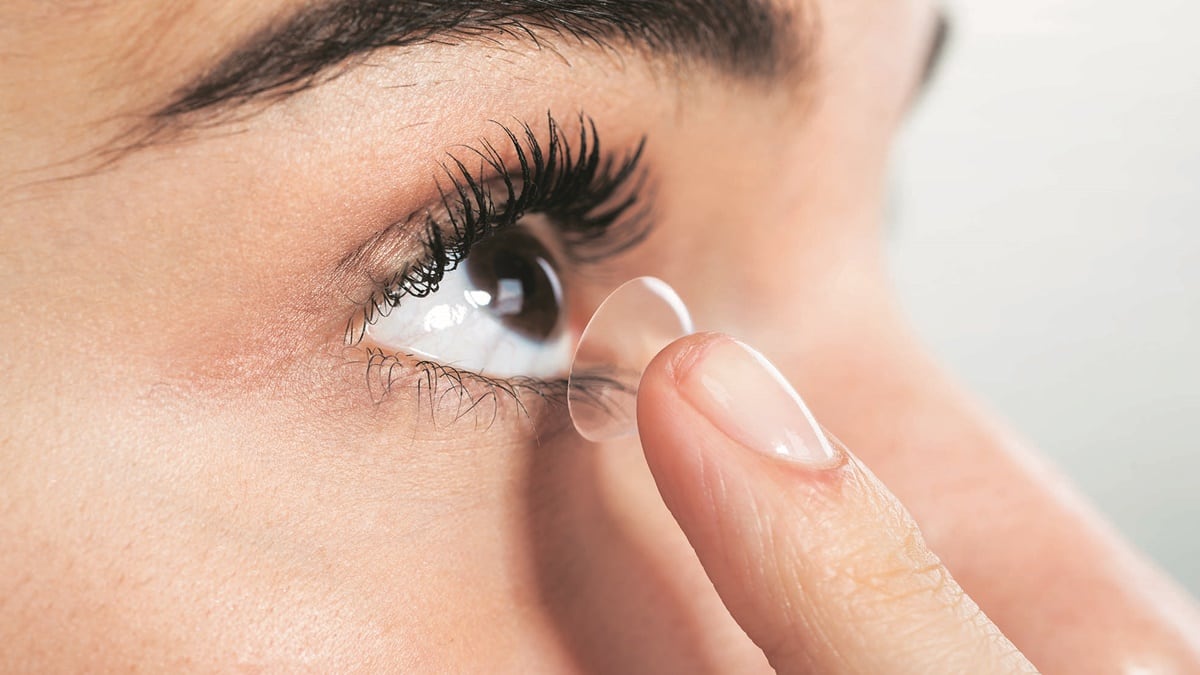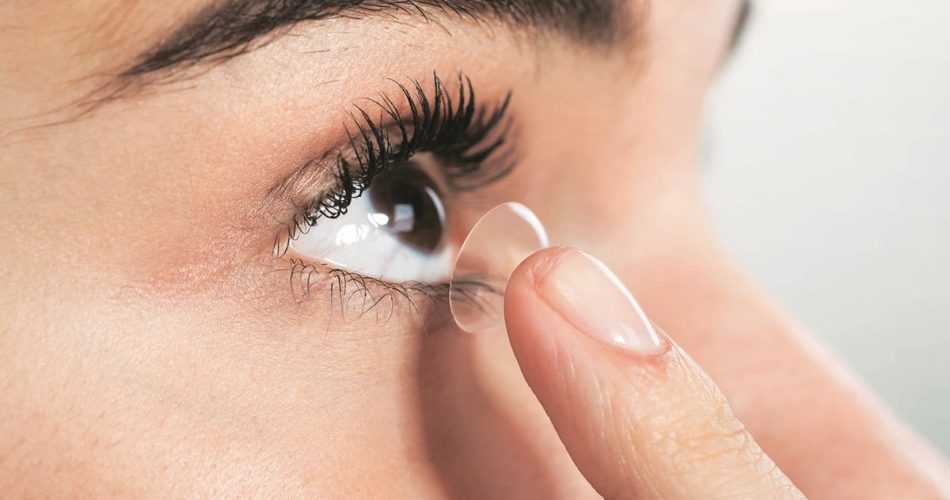
Contact lenses have recently been making headlines, but not for the right reasons. A new study conducted in the US has found alarming levels of organic fluorine, a marker of perfluoroalkoxy alkanes (PFAS) or ‘forever chemicals’, in 18 popular types of contact lenses.
PFAS are a group of chemicals used in various consumer products to make them resistant to water, stains, and heat. These chemicals, also known as ‘forever chemicals’, do not naturally break down and have been linked to serious health issues such as cancer, foetal complications, liver disease, kidney disease, autoimmune disorders, and more, according to a recent report in The Guardian.
In the midst of this news, a TikToker named Doug gained widespread attention on social media after revealing that he had worn the same pair of contact lenses continuously for three years. Unfortunately, Doug developed permanent astigmatism and experienced ‘build up’ behind his eyelids, as reported.
Although Doug eventually recovered after a year of exclusively wearing glasses, this incident has once again brought attention to the potential risks associated with contact lenses.
Keeping Your Eyes in Mind
Contact lenses have been a game-changer for those who prefer not to wear glasses. Since their widespread use in the early 1970s, they have been adopted for their cosmetic benefits, wider field of vision (especially peripheral), reduction of glare and fogging issues commonly associated with glasses, as mentioned in a Financial Express article. Daily disposable contact lenses, introduced in the 1980s, have revolutionized the lives of many people. However, contact lenses are not without their problems,” says Dr Deepali Garg Mathur, principal consultant—ophthalmology, Max Multi Speciality Centre, Panchsheel Park, New Delhi.
One common issue is red eyes caused by lens irritation or dryness. Contact lenses are hygroscopic, meaning they tend to absorb tears and create a dry environment, increasing the risk of infection, explains Dr Mathur. Prolonged use of contact lenses can lead to the development of papules in the upper lid or giant papillary conjunctivitis (GPC). Long-term users and those who exceed the recommended duration of lens wear may also experience eye ulcers and corneal vascularisation.
Recent reports suggest that sleeping with contact lenses can have serious consequences. It increases the likelihood of eye infections, potentially leading to permanent corneal damage and vision loss. “Corneal infections, specifically microbial keratitis, become more than five times more likely when contacts are worn overnight, regardless of lens type. Even occasional or accidental sleeping with lenses increases the risk of infection,” warns Dr Saurabh Varshney, senior consultant, ophthalmology, Primus Super Speciality Hospital, New Delhi.
Normally, tears help protect the eyes against infection by introducing new fluid and oxygen with each blink, maintaining the health of the cornea. However, when contact lenses are worn during sleep, the corneas receive less tear fluid due to the absence of blinking, limiting the opportunity for tears to mix with the fluid beneath the lenses and flush out microbes, explains Dr Varshney.
Additionally, sleeping with contacts or wearing them for extended periods reduces corneal oxygenation, potentially damaging the cornea’s surface and hindering its cell regeneration. This lack of oxygen creates an environment where bacteria can thrive and lead to infections over time.
Considering Alternatives
If contact lenses are not a suitable option, LASIK surgery, also known as laser eye surgery or laser vision correction, can be an effective alternative. Dr Priyanka Singh, consultant and eye surgeon at Neytra Eye Centre, New Delhi, explains that LASIK surgery can replace glasses or contact lenses. While there may be some complications associated with LASIK, a thorough pre-surgery evaluation can help identify any conditions that may complicate the procedure. Once deemed fit for LASIK surgery, the chances of complications are minimal, she says.
Some patients may experience dry eyes after LASIK surgery, but this usually improves within one to two months.
The cost of LASIK surgery can range from ₹30,000 to ₹40,000 for both eyes, depending on the advancements in LASIK machines. However, Dr Singh adds that the risk of vision loss as a result of complications is uncommon. Some individuals may experience temporary side effects such as dry eyes and glare, but these usually resolve within a few weeks or months.
Dr Mathur from Max Multi Speciality Centre emphasizes that most contact lens users tend to misuse their lenses by exceeding the recommended duration of use, using expired lenses, or neglecting proper lubrication. For those who are not careful with their contact lenses, LASIK surgery may be a viable option. However, for those who can adhere to the recommended regimen, contact lenses remain a suitable choice.
Keeping Your Vision Clear
Experts recommend maintaining good eye health by adopting a healthy diet. “Eating nutrient-rich foods promotes good eye health and can help prevent age-related vision issues such as cataracts, macular degeneration, and night blindness. Nutrients like omega-3 fatty acids, lutein, zinc, and vitamins C and E are particularly beneficial,” advises Dr Gupta of Max Hospital, Vaishali.
Quitting smoking is another important step. Smoking increases the risk of developing macular degeneration, cataracts, and damage to the optic nerve, among other medical conditions.
Here are some additional tips from Dr Gupta for maintaining good eye health and preserving eyesight:
* Wear sunglasses to protect your eyes from excessive UV exposure, which can increase the risk of cataracts and macular degeneration.
* Use safety eyewear when working with dangerous or airborne chemicals.
* Follow the 20:20:20 rule when using a computer screen. Take a break every 20 minutes, look at an object 20 feet away for 20 seconds to reduce eye strain.
* Regularly visit your eye doctor for check-ups and screenings.
Checklist for Contact Lens Users
* Always wash and rinse your hands thoroughly before handling your lenses.
* Clean your lenses after removal using the recommended solutions.
* Clean your lens storage case in warm soapy water at least once a week.
* If you drop a lens, clean and rinse it before reapplying to avoid any potential contamination.
* Blink regularly to keep the lens moist and clean.
* Seek immediate medical attention if you experience any unexplained redness, persistent pain, discomfort, change in vision, light sensitivity, or unusual eye secretions.
* Discard all solutions one month after opening, even if there is some remaining.
* Use swimming goggles when swimming with contact lenses.
* Avoid wearing lenses when you are unwell or if your eyes are red.
* Apply cosmetics and eye make-up after inserting lenses, and only on the outer lid margin.
(Courtesy: Dr Santosh Bhide, ophthalmologist and eye surgeon, Ruby Hall Clinic, Pune)

